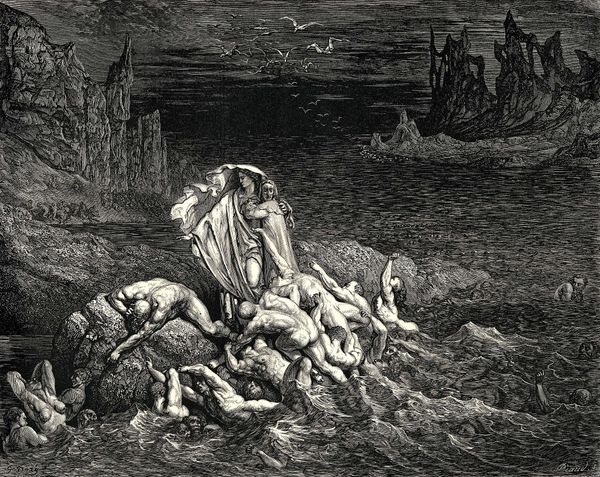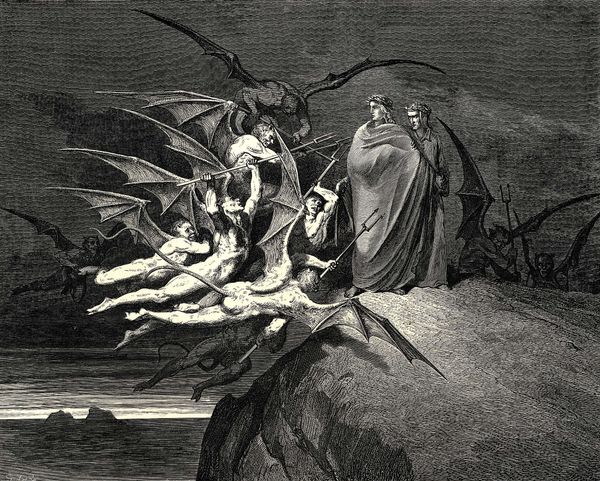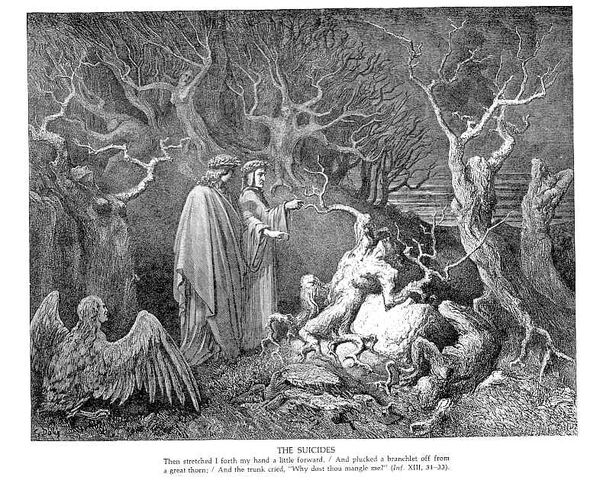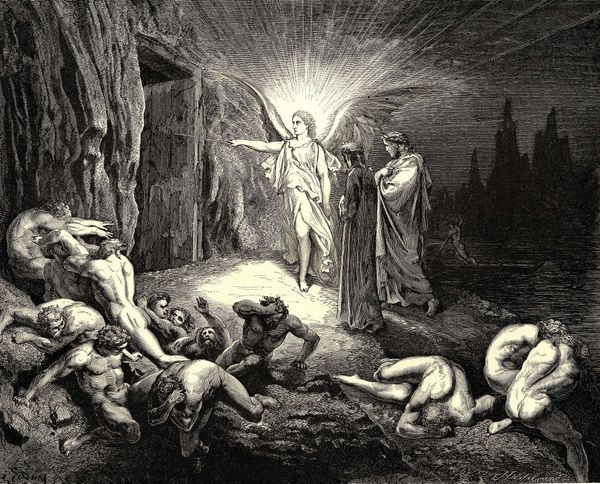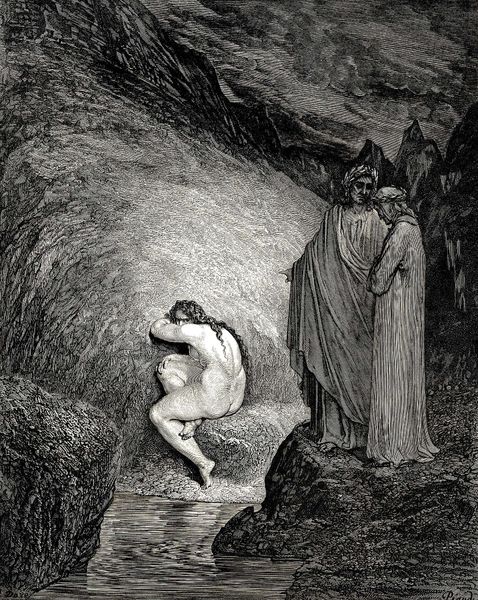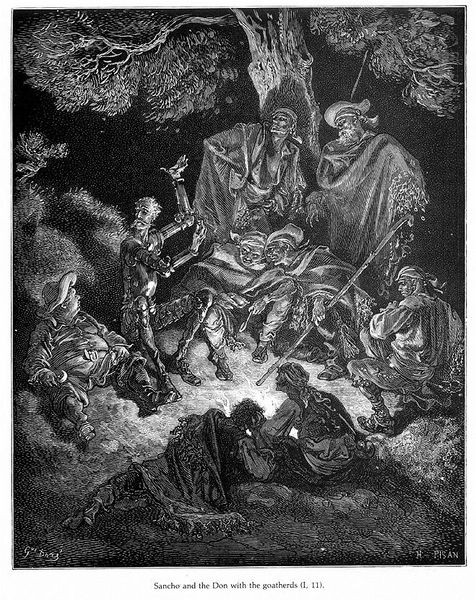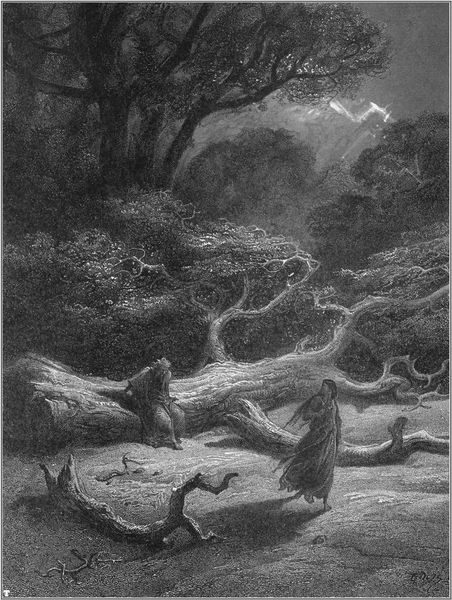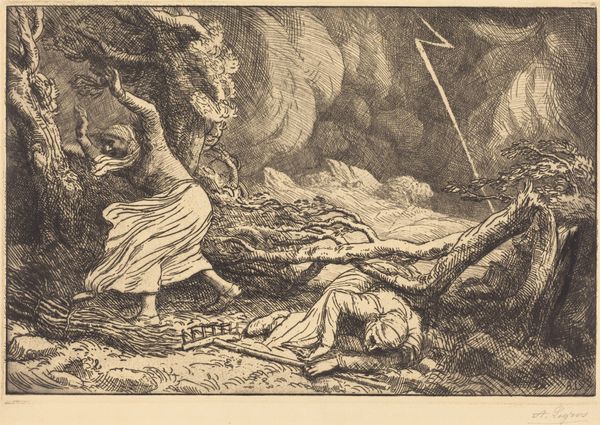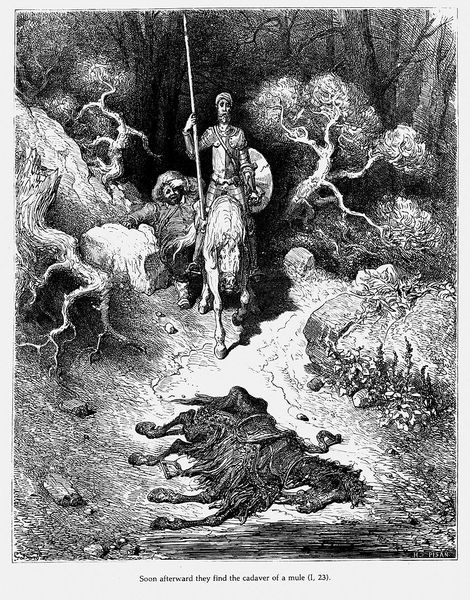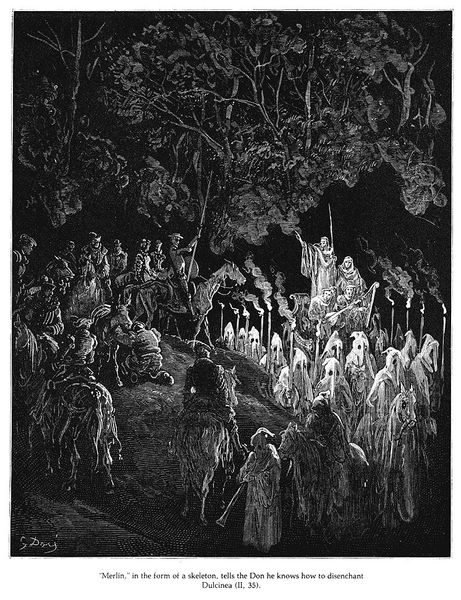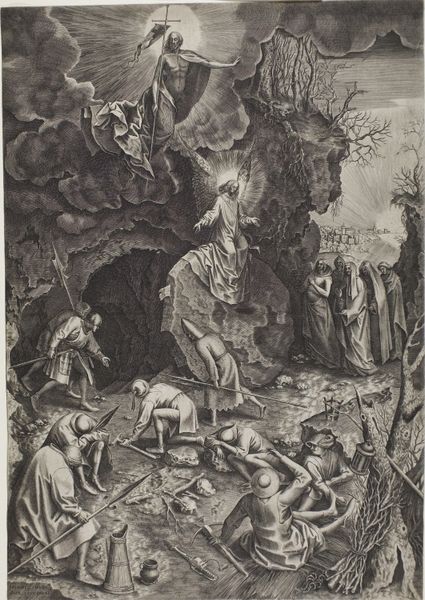
drawing, woodcut, engraving
#
tree
#
drawing
#
medieval
#
fantasy concept art
#
narrative-art
#
fantasy art
#
sculpture
#
landscape
#
fantasy-art
#
figuration
#
forest
#
romanticism
#
woodcut
#
line
#
haunting
#
history-painting
#
engraving
#
ruin
Copyright: Public domain
Editor: Here we have Gustave Doré's "The Inferno, Canto 13," a drawing with incredible detail and haunting imagery. I am immediately struck by the unsettling mood. What can you tell us about it? Curator: This image powerfully illustrates a key scene from Dante's *Inferno*, showcasing the Wood of the Suicides. Doré’s work invites us to consider the 19th-century’s fascination with the medieval period, and specifically, how Dante's epic was being re-interpreted through a lens of Romanticism. How do you think societal attitudes of that time influenced this interpretation? Editor: That's a fascinating point. Perhaps there was an obsession with the macabre, fitting in with societal anxieties, reflected in the style and composition choices. Curator: Precisely. Notice how Doré uses incredibly detailed engravings to create an almost hyper-realistic yet fantastical landscape. The dense, gnarled trees, the figures of Dante and Virgil, all contribute to a feeling of oppression and moral decay. This served a didactic purpose, reinforcing the social and religious norms of the time. The availability and accessibility of the printed image is also crucial: How might these engravings, distributed widely, influence public perceptions of morality and punishment? Editor: I imagine they could serve as visual warnings. It's interesting how art can function as both entertainment and social commentary. Curator: Absolutely. Doré’s "Inferno" became a part of the collective consciousness, shaping the public's understanding of sin, justice, and the boundaries of societal behavior through his powerful and widely distributed engravings. This reminds us of the critical role of visual imagery in disseminating and reinforcing cultural values. Editor: It’s amazing how an illustration can have such lasting socio-cultural implications. Thank you! Curator: My pleasure! Thinking about art this way really gives new depth of understanding.
Comments
No comments
Be the first to comment and join the conversation on the ultimate creative platform.

